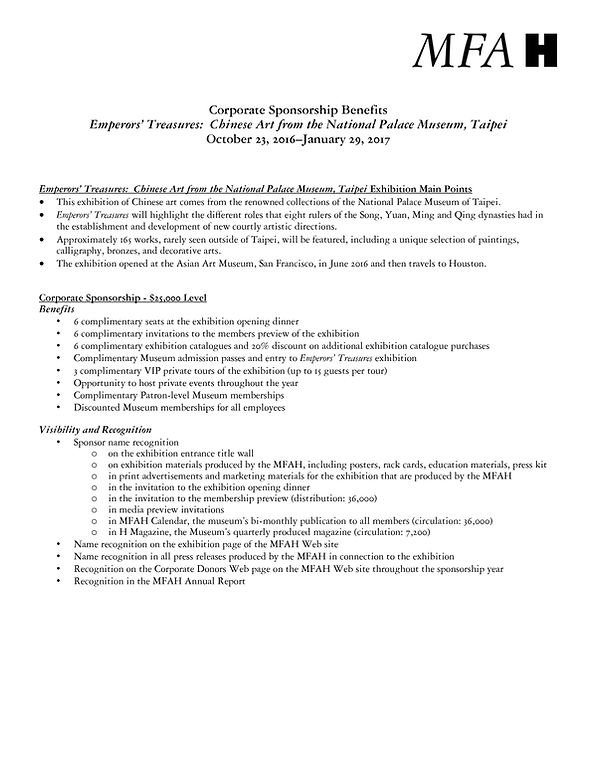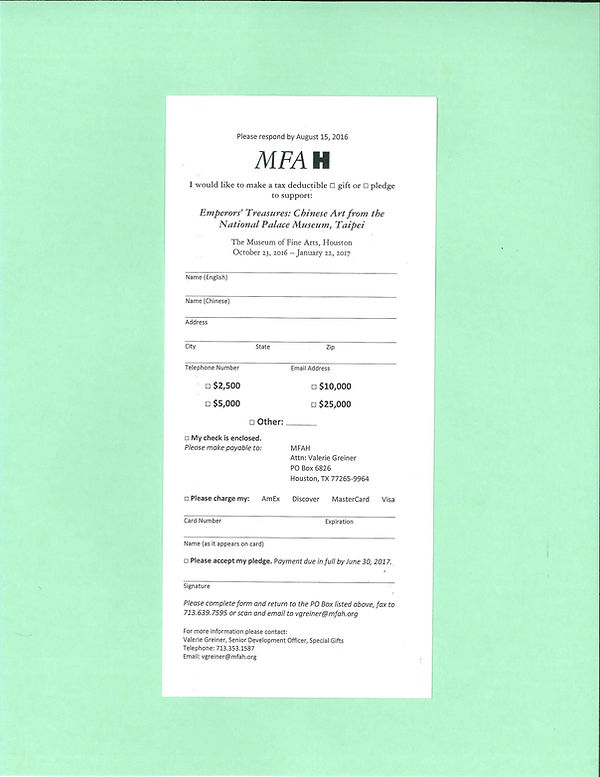Major Exhibition of Masterpieces from the National Palace Museum, Taipei, Presented in Houston in October
By Connie Kwan-Wong
 Gold BowlUsed Personally by the Qianlong Emperor, Qing dynasty, reign of the Qianlong emperor, 1735–96, gold, National Palace Museum, Taipei. Image © National Palace Museum | 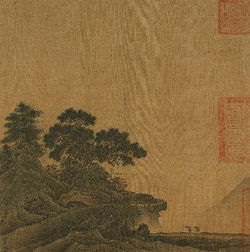 Jia ShiguAncient Temple in Mountain Pass, Southern Song dynasty, 1127–1279, album leaf: ink and color on silk, National Palace Museum, Taipei. Image © National Palace Museum |
|---|---|
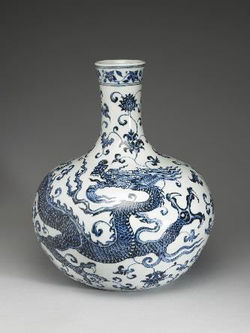 Vase with Flying DragonMing dynasty, reign of the Yongle emperor, 1403–24, porcelain with cobaltblue underglaze, National Palace Museum, Taipei. Image © National Palace Museum | 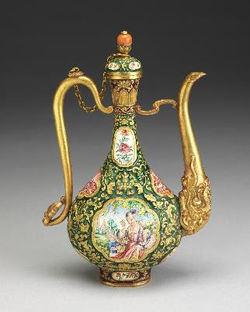 Champlevé Ewerwith European Figures in Landscape, Qing dynasty, reign of the Qianlong emperor, 1735–96, gold with enamel inlay, National Palace Museum, Taipei. Image © National Palace Museum |
This fall, the Museum of Fine Arts, Houston, will open Emperors’ Treasures: Chinese Art from the National Palace Museum, Taipei, a major exhibition of more than 160 works of art from the renowned collections of the National Palace Museum, Taipei. The exhibition features a unique selection of paintings, calligraphy, bronzes, and decorative arts, such as porcelain, textiles, enamels, and jade, and will be on view in Houston from October 23, 2016, to January 22, 2017.
Co-organized by the Asian Art Museum in San Francisco and the National Palace Museum, Taipei, the exhibition is composed of treasures that have rarely been displayed outside of Taipei. Highlights include a white pottery vase from the 11th century, a supreme example of the art of the Chinese potter; landscape paintings by court artists of the 12th century; a calligraphy by the Emperor Huizong in his distinctive style; a “chicken cup” produced in the mid-Ming period, for centuries the most sought after of all porcelain wares on account of its superb quality; fine silk tapestries little known outside China; and the Qianlong emperor’s box of small treasures.
Gary Tinterow, director of the Museum of Fine Arts, Houston, commented, “We are grateful to the National Palace Museum, Taipei, and the Asian Art Museum for making this exhibition possible. The collections of imperial treasures housed at the National Palace Museum, Taipei, are unmatched in rarity and scope, and we are thrilled to be able to provide Houston audiences with the special opportunity to experience these remarkable objects in person.”
“The artworks and objects displayed in Emperors’ Treasures celebrate the cultural contributions of these significant imperial rulers, illustrating their roles as distinguished patrons of art, and often, as gifted artists,” added James Watt, consulting curator and curator emeritus of the department of Asian art at the Metropolitan Museum of Art in New York. “The exhibition exposes visitors to the art of this important period, including many works and objects never before seen in the U.S.”
Emperors’ Treasures presents examples of the finest craftsmanship and imperial taste, exploring the roles that eight emperors and one empress—who ruled between the early-12th-century Song dynasty and the early-20th-century Qing dynasty—had in the establishment and development of new artistic directions through the masterpieces they collected and commissioned, and in some cases, created. The exhibition will illuminate the legacies of Emperors Song Huizong (r. 1100–1125), Kublai Khan (r.1260–94), Yongle (r. 1403–24), Xuande (r. 1425–35), Kangxi (r. 1662–1722), Yongzheng (r. 1723–35), Qianlong (r.1735–96), and Empress Dowager Cixi (r. 1861–1908), revealing how each ruler developed his or her distinct aesthetic and influenced the production of the imperial workshops under their reign. Through the examination of each work’s subject, style, and type of craftsmanship, Emperors’ Treasures outlines
how Chinese art came to evolve and flourish under Han Chinese, ongol, and Manchu rulers.
Publication
The exhibition will be accompanied by a fully illustrated catalogue published by the Asian Art Museum of San Francisco, where the exhibition will be on view from June 17 to September 18, 2016.
Organization and Funding
This exhibition is co-organized by the Asian Art Museum of San Francisco and the National Palace Museum, Taipei.
The presentation in Houston is a collaboration between the Museum of Fine Arts, Houston; the Asian Art Museum; and the National Palace Museum.
About the Museum of Fine Arts, Houston
Founded in 1900, the Museum of Fine Arts, Houston, is among the 10 largest art museums in the
United States. Located in the heart of Houston’s Museum District, the MFAH comprises two
gallery buildings, a sculpture garden, theater, two art schools, and two libraries, with two house
museums, for American and European decorative arts, nearby. The encyclopedic collection of the
MFAH numbers more than 65,000 works and spans the art of antiquity to the present.

